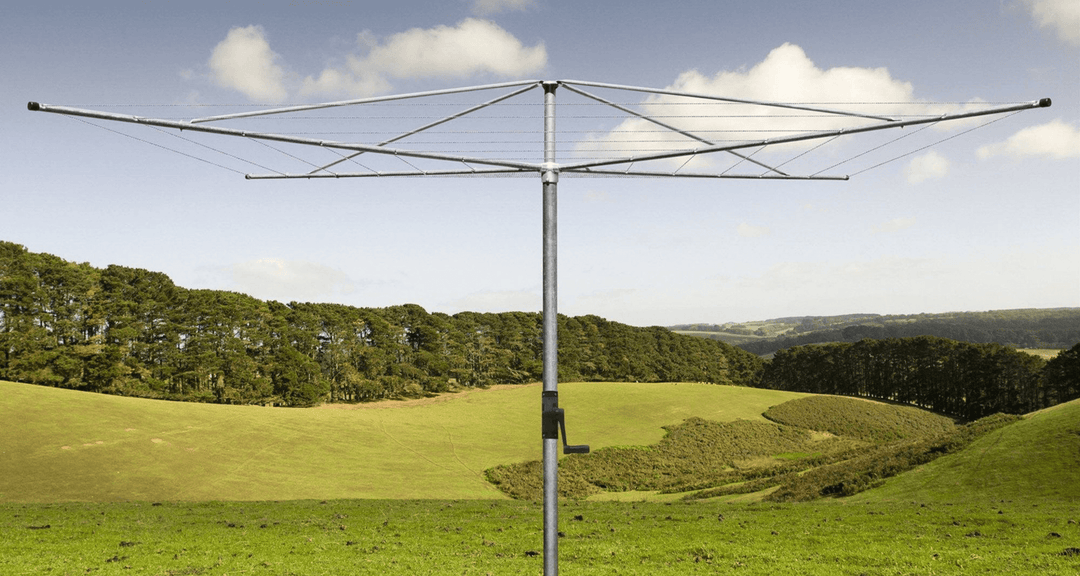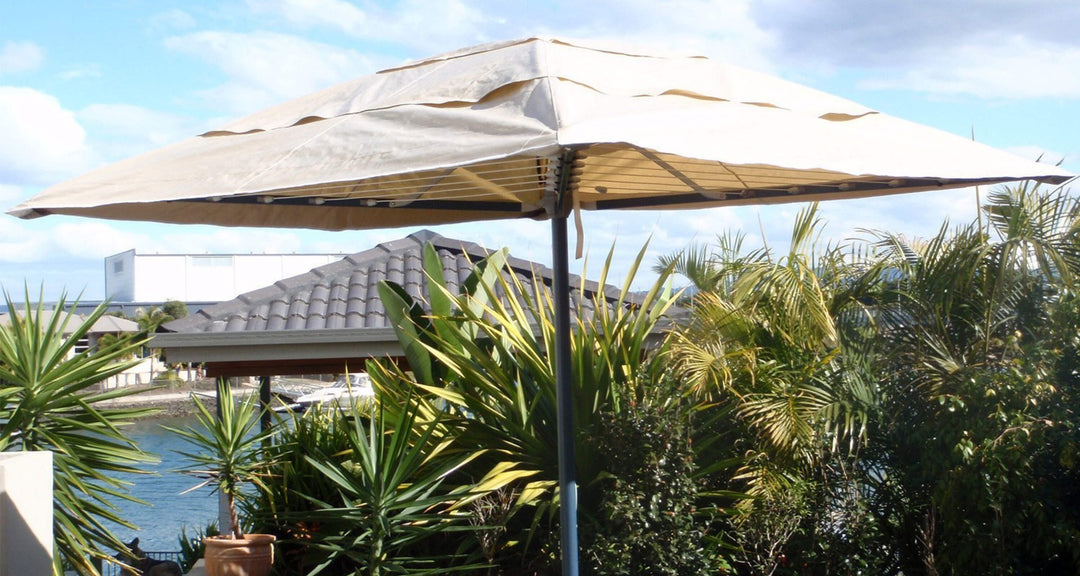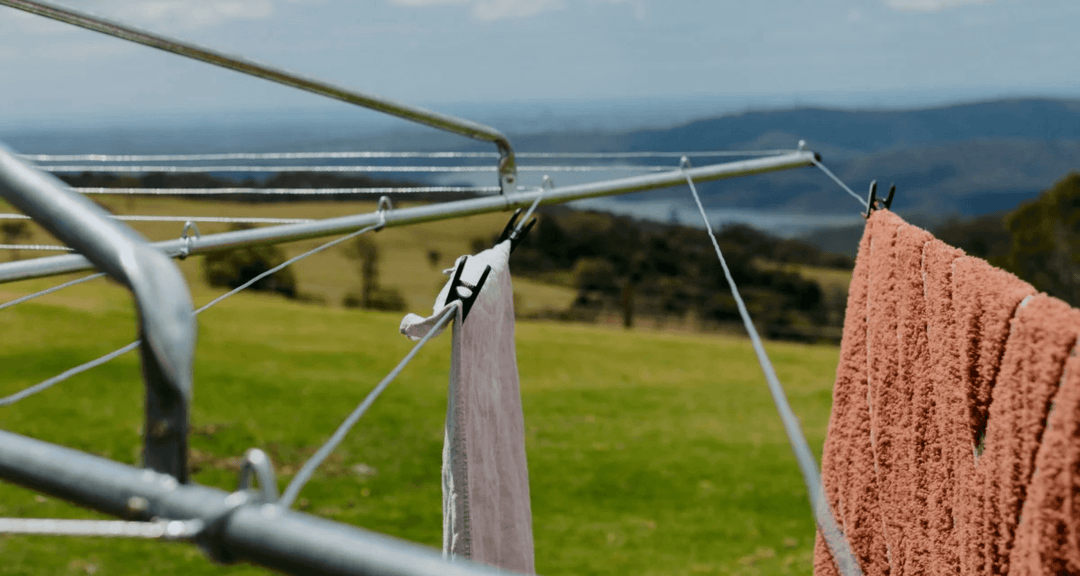How to Restring a Clothesline: Step-By-Step Guide
Whatever the situation, learning how to restring a clothesline can save you time and money on professional repair services.
Whether you have a rotary, wall-mounted, or retractable Hills clothesline, this guide has you covered.
We'll explore the different types of Hills clotheslines, essential tools and materials, and provide maintenance tips to prolong the life of your clothesline.
Short Summary
-
Learn how to restring a Hills clothesline for optimal performance and longevity.
-
Understand essential tools & materials, preparing the line, step-by-step guide and threading techniques.
-
Adjust tension properly with troubleshooting tips and maintenance advice for your clothesline.
Understanding Hills Clotheslines
Hills clotheslines are known for their durability and functionality, with three main types available:
-
Rotary
-
Wall-mounted
-
Retractable
Each type has its unique features and benefits, but all are designed to hold your freshly laundered clothes for drying on a hills clothes line while withstanding the test of time.
However, the elements, overstretching from heavy laundry loads, improper stringing, wear and tear, and low-quality materials can contribute to a snapped washing line.
Knowing how to rest your clothesline can extend its lifespan and save you money on professional clothesline restringing services.
Preparations For Replacing Clothesline Cord
Before you begin restringing your Hills clothesline, it's essential to prepare it for the process. Here are the steps to follow:
-
Start by cutting and detaching the worn-out line.
-
Inspect the hooks, tensioners, and centre poles for any signs of damage or wear.
-
If they are weak, faded, or damaged, consider replacing them to ensure the longevity of your clothesline.
It's also a good idea to clean the hooks, tensioners, and centre poles using a stiff wire brush or sandpaper to remove any dirt, rust, or debris.
If replacement of these parts is not feasible, applying a coat of rust-resistant paint can help protect them from external conditions and prolong their lifespan.
Essential Tools and Materials for Restringing a Clothesline
Before you begin the restringing process, make sure you have the essential tools and materials on hand.
Things you'll need to restring a Hills clothesline:
-
A replacement clothesline cord or wire of suitable length and quality
(We recommend using Hills or Austral replacement cord packs for best results or Austral Replacement Clothesline Wire)
-
Scissors or a utility knife for cutting the cord
-
Pliers for gripping the cord and tightening knots
-
Replacement clips (if necessary)
Having the right tools and materials ensures a smooth and efficient restringing process.
Step-by-Step Guide to Restringing a Hills Rotary Clothesline
Now that you're familiar with the different types of clotheslines and have prepared your clothesline for restringing...
...it's time to dive into the step-by-step process of restringing rotary clotheslines.
This section will provide you with detailed instructions on how to thread the new line through the tensioners and clips...
...as well as techniques for knotting and securing the cord to ensure a tight and sturdy line.
To begin, you'll need to measure the length of the new line and cut it.
Step 1: Threading the New Line
To begin the clothesline rewire process, start by cutting the existing cords on your rotary clothesline.
Unravel the new line and insert one end through the securing loop on the first arm.
Wrap it around the back groove of the loop and feed it through the front slot.
Pull the line taut, leaving approximately 12mm of excess, and cut the remaining cord.

Step 2: Knotting and Securing the Cord
To knot and secure the cord, start by pulling the line tight through each arm, using a grip or pliers to eliminate any slack.
Once the line is tight, lock it in place immediately after the knot to ensure a secure and sturdy line.
After you have secured the line, double-check that it is straight and level.
If necessary, make any adjustments to the line's tension to achieve the perfect balance between tightness and functionality.

Step-by-Step Guide to Restringing a Wall Mounted Clothesline
If you have wall-mounted clotheslines, the restringing process will be slightly different.
In this section, we'll guide you through the steps required to restring your wall-mounted clothesline, including threading the new line through the holes and tensioners.
Adjusting the tension for a tight and functional line is also important. With the right tension, your clothesline will be able to hold your clothes.
Step 1: Threading the New Line
Begin by threading the new cord through the innermost hole on the clothesline frame, then progressing to the outer holes.
Thread towards the opposite direction, alternating with each line.
Make sure to leave approximately 20cm of cord hanging when you begin threading.
As you thread the line through the holes, ensure that all lines are parallel and evenly spaced.
Once you have threaded the line through all the holes, secure one end of the cord through one of the tie-offs or tensioners on the frame.
Secure the other end of the line with the tie-off or tensioner then cut the excess cord and screw on the cap afterwards.
Step 2: Adjusting Tension and Securing the Cord
With the line threaded and secured, it's time to adjust the tension. Start by pulling the line toward you until it is firmly in place.
To ensure the line is straight and level, check its alignment and make any necessary adjustments.
To secure the cord and maintain the desired tension, lower the Tension Lock lever on your wall-mounted clothesline.
Once the line is properly tensioned and secured, your wall-mounted clothesline is ready for use.
Step-by-Step Guide to Restringing a Retracting Clothesline
Restringing a Hills retractable clothesline can differ depending on the model.
While most Hills retractable clotheslines are essentially the same internally, the modifications done to the reeling mechanism vary from generation to generation.
Hills recently upgraded its line of retractable clothesline models again so it is a wise idea to consult your owner's manual for the proper procedure.
Step 1: Threading the New Line
Replace the lines one at a time by feeding one end of the line through the hole in the side of the spool, pull the line taut then secure the line by tying a figure 8 knot.
Repeat the steps if you have a model with independent spooling or reeling mechanism for each line.
To ensure a tight and sturdy line for each spool, gently pull the line until it is moderately tight, adjust the other lines to the same tension.
Secure all ends to the spreader arm and trim the extra cords accordingly.
Step 2: Resetting the Spool Mechanism/Adjusting Uneven Tension
The good thing about recent Hills retracting clothesline models is the fact that they have independent reeling mechanisms that can be easily reset to fix uneven tension or sagging lines.
To reset the reeling mechanism of your Hills retracting clothesline, follow these steps:
-
Close the clothesline unit up/retract the lines back into the unit.
-
Pull the bar out from the cabinet (slowly and evenly) out to its maximum distance.
-
Slowly allow the bar to retract back into the cabinet.
Troubleshooting Common Clothesline Restringing Issues
Even with proper maintenance and restringing, you may still encounter some common clothesline restringing issues.
In this section, we'll address these issues and provide guidance on how to resolve them, helping you keep your clothesline in optimal working order.
Keeping the Line Tight
Some common issues with DIY clothesline restring include lines that sag even when there are no clothes on them...
...indicating that the line has stretched beyond its functional capacity that cannot be fixed even with proper line replacement or the tensioning process was not done right.
This might also be caused by a failing spool/reeling mechanism, compromised frame, etc. which require repair or rewire service.
Such cases are caused by general wear and it is necessary to contact a professional clothesline restringing or clothesline repair expert.
Another issue may involve improperly tensioned wires or cords, which can account for nearly half of clothesline malfunctions and lead to unnecessary costs.
Maintenance Tips for Your Clothesline
Proper maintenance of your clothesline is essential for ensuring its longevity and optimal performance even when drying heavy items all the time.
In addition to regularly restringing your clothesline, there are a few key maintenance tips to keep in mind.
First, clean the line, hooks, and tensioners regularly to prevent dirt and debris from accumulating.
Lubricate moving parts to ensure smooth operation and prevent rusting.
Be mindful of how you distribute the weight of your laundry across the line, particularly with heavier loads, as this can help prevent sagging and maintain proper tension.
Clothesline Cover Prolongs the Life of Your Clothesline
Often overlooked, a clothesline cover can keep the lines and most of the clothesline's components from getting too exposed to the harsh elements.
Excessive exposure to UV rays, heat, cold, and moisture can prematurely damage the outer coating of your clothesline cord as well.
An added bonus of this is your clothes also protected from unwanted stuff like animal droppings, dust, or from the rain.
You might want to look into getting a clothesline cover specific to your type of Hills clothesline.
Frequently Asked Questions
To fix a Hills hoist clothes line, try spraying WD40 into the space around the winder, or applying oil or lubricant into the grease hole near the handle.
Additionally, resetting the winding mechanism by rotating the handle clockwise or counter-clockwise while pushing or pulling the head may help.
Check out our comprehensive article here for Fixing a Hills Hoist Winder.
You can easily restrain a clothesline with a few simple tools - no need to pay for a rewire service! Just follow our guide and you're good to go!
You’ll need a replacement clothesline cord/wire, scissors or utility knife, pliers, and replacement clips to rest your Hills clothesline.
Hills provides three different types of clotheslines to suit a variety of needs - rotary, wall-mounted, and retractable.
Each type of clothesline has its own advantages and disadvantages, so it’s important to consider your needs before making a purchase.
For example, rotary clotheslines are great for larger yards, while wall-mounted clotheslines are great for larger yards.
To adjust tension on your wall-mounted clothesline, pull the cord tight, raise the lever of the Tension Lock, and then secure it by lowering the lever.
Final Words
In this comprehensive guide, we've covered everything you need to know about restringing your Hills clothesline.
From understanding the different types of clotheslines to essential tools and materials, step-by-step instructions for restringing, and maintenance tips to keep your clothesline in top-notch condition.
With proper care and attention, your clothesline can last for many years, providing you with an efficient and eco-friendly solution for drying your laundry.
We hope this guide has empowered you with the knowledge and confidence to tackle the restringing process yourself, saving you time and money on professional services.
 Fold Down
Fold Down

 Rotary Hoist
Rotary Hoist
 Retractable
Retractable
 Portable
Portable
 Ceiling Airer
Ceiling Airer
 Covers
Covers
























